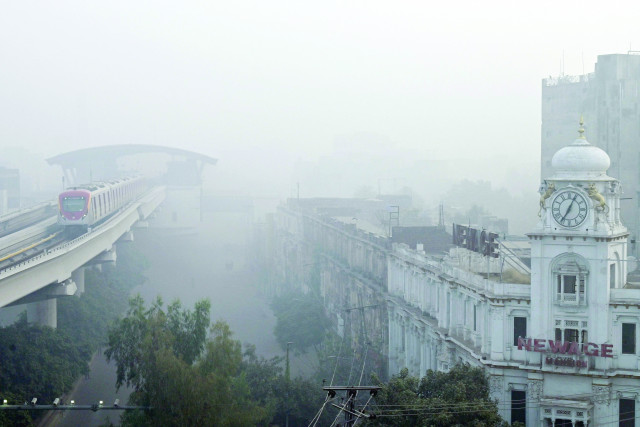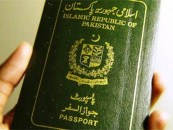Emissions certification misses the mark
Pilot project fails to tackle pollution from motorcycles, rickshaws, and low-quality fuel, raising concerns

Lahore, which battles severe smog each fall season, is once again initiating measures to curb environmental pollution by conducting emissions testing and certification of four-wheel vehicles. Critics, however, have argued that the project overlooks the role of key polluters in instigating air pollution.
Under a pilot project, vehicles in Lahore are undergoing emissions testing after which they receive a green sticker with a QR code on their windshield, confirming that they meet environmental emission standards. However, this testing is currently limited to four-wheeled vehicles, excluding motorcycles and rickshaws, which significantly contribute to pollution. As per statistics obtained from the Punjab Excise Department, the province has 20 million registered motorcycles and 5 million four-wheeled vehicles, with Lahore alone accounting for 5.2 million motorcycles and 1.3 million four-wheeled vehicles.
According to Secretary of Environment Raja Jahanzaib Anwar, the current emissions testing initiative falls under the Vehicle Inspection and Certification System (VIC). “A decade ago, the Punjab government had established 32 VIC stations across the province through a public-private partnership (PPP). These stations evaluated nine key parameters, including smoke emissions and overall vehicle fitness. However, with the rapid increase in the number of vehicles, the VIC system became overwhelmed. To ease the burden on the Transport Department, the Environment Protection Agency (EPA) has taken over the responsibility for emissions testing, with nine dedicated stations across Lahore, offering free services to the public. This complimentary testing facility will remain available until June 30th,” claimed Anwar.
According to the Environment Department, vehicles that exceed permissible emission limits are denied certification and instructed to undergo necessary repairs. This system is expected to be fully operational before the upcoming smog season. Vehicles without certification will face restricted movement and may be subject to substantial fines.
Despite the well-intended plan devised by the EPA, key stakeholders in the automotive industry are not too optimistic about the success of the pilot project. Suneel Sarfraz Munj, Chairman of Pak Wheels—a leading vehicle marketplace—highlighted the fact that 60 per cent of road traffic in Pakistan consisted of two- and three-wheelers, which were among the biggest contributors to vehicular smoke emissions. “Apart from this, we have to focus on improving our petrol and diesel quality. Until fuel quality improves, vehicle certification will not be beneficial. As an analogy, using poor fuel in clean vehicles is as futile as serving bad food in clean dishes,” explained Munj.
On the other hand, Dawar Hamid Butt, Coordinator of the Pakistan Air Quality Experts Group, considered this initiative a promising pilot project. "I hope this initiative will deliver positive results and pave the way for broader efforts to protect large cities like Lahore from worsening air quality,” he added.
Where some environmental experts welcomed the emissions testing initiative as a positive step toward tackling air pollution, environmental lawyer Rafi Alam underscored the importance of expanding testing to include motorcycles, rickshaws, and loader vehicles, which are major contributors to smoke and harmful emissions.
Furthermore, many experts have opined that during emissions testing and certification, it was crucial to consider the engine quality, which should be at least Euro III since engines with lower standards emitted more pollutants. Apparently, engines with Euro II or lower standards, such as two-stroke rickshaws, old motorcycles, and vehicles over 25 years old, emit hazardous gases like nitrogen oxide, carbon monoxide, hydrocarbons, and particulate matter. In contrast, vehicles with modern engines significantly reduce emissions. Hence, experts have urged the government to make the use of Euro V fuel and engines mandatory.


















COMMENTS
Comments are moderated and generally will be posted if they are on-topic and not abusive.
For more information, please see our Comments FAQ